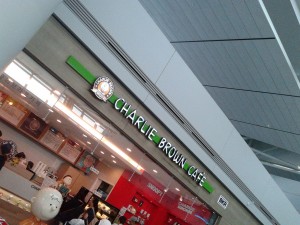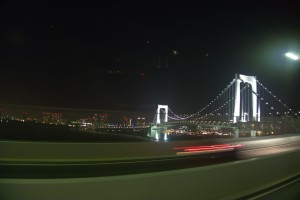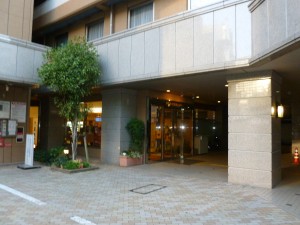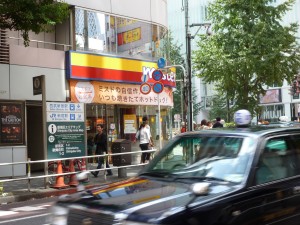Tokyo is considered to be one of the world’s busiest and craziest cities, with its vast numbers of inhabitants and its large impression on modern popular culture. As such, it’s perhaps the number one destination for fans of Japanese culture to visit.
This summer, I had the pleasure of spending a week in Japan’s capital, where I got to see some of the key attractions that the city has to offer. In this multi-part feature I’ll take you along as we explore Tokyo, hopefully answering some of your questions and giving guidance if you are thinking about making a trip to Japan in the future.
If you do want to splash out and make the jump, there are quite a few options available. Some of the large travel agents offer Japan and Tokyo as available destinations. What’s covered in their advertised holidays vary widely, along with the prices. If you can find one that suits your tastes, it’s a decent alternative to booking everything yourself, which requires a lot more confidence.
Going it alone means booking a hotel for yourself, and not all have English speaking staff. However it does give flexibility depending on the type of lodgings that you are after. You’ll also need knowledge of how to get around, although it is easy to learn as long as you’re willing to explore.
The third option is to jump on an organised tour. These are great for people who are visiting for the first time and offer a comprehensive look at Tokyo’s main tourist attractions. Some also offer negotiable extension packages and opportunities to go further afield.
Having not visited Tokyo before, I opted to go with the third option. For tour operators in the UK, the most popular is Japan Journeys. As a company they are highly reputable, and have been featured in publications such as NEO Magazine, which is what first brought them to my attention. The company began with their original “Manga Tour”, and have expanded over the years to offer a variety of packages for all kinds of tastes. The manga tour is currently offered over two dates: the spring tour in March and the summer tour in August. The standard duration is eight days (three travelling, five in Tokyo), although you can get an extension which is negotiable to your needs. At a first look it may seem pricey for a short amount of time, but when you throw in a tour guide, the included flights and hotel, and the anime studio tour; it seems a lot more worth it for a first trip.
Japan Journey’s booking process is relatively straightforward; offering a variety of convenient methods. We’d recommend just phoning up directly, and they’ll get everything sorted for you; although you may have to confirm some details via email. If you don’t want to book by phone, you can do everything via email, or you can download and print the paper booking form and send it through the post. They’ll then get back in touch to confirm your booking, the confirmation of which will be sent by post with the receipt.
In terms of communication up until leaving, Japan Journeys really hits the mark. Email updates are sent out if anything on the trip changes, for example the specific studio for the studio tour was changed, as their usual partner was moving office. As a whole group we were quickly informed as soon as the operators knew, and were later updated again when an alternative studio had been found. Additionally, if you have a general query or question, they’re fast in getting back to you with the information you need – I never usually had to wait more than a few hours on a working day for an email response. A few weeks before you leave you’ll receive an information pack that has a lot more detail about the trip than the initial confirmation. While it could be said that it would be better to get this as soon as possible, time is needed to make sure that everything is confirmed at their end. The information provided is clear, and a lot of it is common sense, such as travelling light and wearing appropriate clothing for the season.
For money cash is essential, as Japan is a cash-based society. I had about 75,000 yen and spent it all in a single week, so it’s important to plan ahead in where you want to go and what you want to buy. If you do go over-budget there are ATMs which accept foreign cards, but make sure you’ve informed your bank you’re going overseas if you do think that you’re going to need it, as there may be extra charges.
Additionally at this point, it is worth mentioning that you should be aware of what items are allowed through UK customs. You can find some objectionable content in Japan that is not allowed to be imported into the UK, so be careful with your purchases.
If you are in the UK, you’ll have to make your way down to Heathrow for the flight to Tokyo, so you’ll need to budget your travel expenses. For those further away, Japan Journeys offers add-on flight connections on both departure and return; which is a quicker and easier method if you don’t want to faff on around London. It especially pays off when you arrive back in the UK, as I discovered! Your hold luggage goes straight from your home airport to Narita and back as well. For those joining the tour outside of the UK, you’ll have to make your own way to Narita.
There’ll be instructions provided to meet up at Heathrow – most likely at the departure gate, but you’re sure to run into other people on the tour as you wander around the terminal – and you’ll be given the details you need to fill in your immigration card for Japanese customs. You’ll receive this sometime at the end of your flight to Tokyo, where you’ll have to fill in your personal details, where you’re staying and how long you’re staying for (this is important as naturally staying for a long period of time requires the right visa).
On the trip, we didn’t actually take a direct route to Narita from Heathrow, instead stopping off at South Korea’s Incheon International Airport for a quick breather. While I was initially dubious at the stop-off, it turned to be an interesting side trip, with the discovery of not just a Hello Kitty café, but a Charlie Brown café. The franchise is huge with kids in south-east Asia it seems, as I would discover later when we got to Harajuku.
On arrival at Narita you’ll have to pass through customs and security. Make sure you line up on all the correct red lines and use all of the aisles (the staff seemed a bit annoyed at the group for not sticking to their rules as such). The customs officers’ English seemed weaker than the security officers’, but just say that you don’t have anything to declare, if that is the case.
Heading out of Narita it’s off to the hotel. Unfortunately Narita is a way outside of Tokyo, in Chiba prefecture, having being constructed at first as an overflow for Haneda Airport. As such you need to travel into Tokyo. There is a train service, however on the tour we took the more leisurely route and went by coach. Not that that’s a bad thing, as the travel into the city was a taster of what was to come, passing by Tokyo Big Sight, Odaiba and Tokyo Tower on our way into central Shinjuku.
Our destination was the Toyoko Inn, Kabukicho. For those of you who aren’t familiar with Kabukicho, it’s a red light district, which in a way makes sense to place a business-style hotel. While saying that may daunt some people, as long as you don’t come into contact with anyone trying to get you into a club things are fine, but in that case just brush them off, and most importantly don’t speak any Japanese. If you’re planning on going yourself and want to look at other hotels, Time Out Tokyo provide a nice selection of suggestions. The only other hotel I really know of is the Cerulean Tower Tokyu Hotel, which gives some impressive views of the city as you go further up (and so do the prices!)
The rooms themselves at the Toyoko Inn are small, including only bed, table, TV, mini-fridge and bathroom. However for a short stay it’s all you really need, especially when you’re going to be out for the majority of the time. So while it offers a decent nice sleep, breakfast isn’t that appealing to western tastes. It’s fine if you like your salty rice balls, but we found ourselves nipping to one of the many nearby convenience stores for snacks. But as long as you don’t mind that, it’s a hard hotel not to recommend because of its central location, even if it is in the red light district.
So, you’ve arrived and you are in Japan. You do have to let the feeling sink in a little, but there is a lot to look forward to. In the next part of the feature we’ll move on to the first day in Tokyo, which includes a look at the Studio Ghibli Museum, a trip to Nakano Broadway, and advice on where not to eat, as well as looking more closely at convenience stores.




